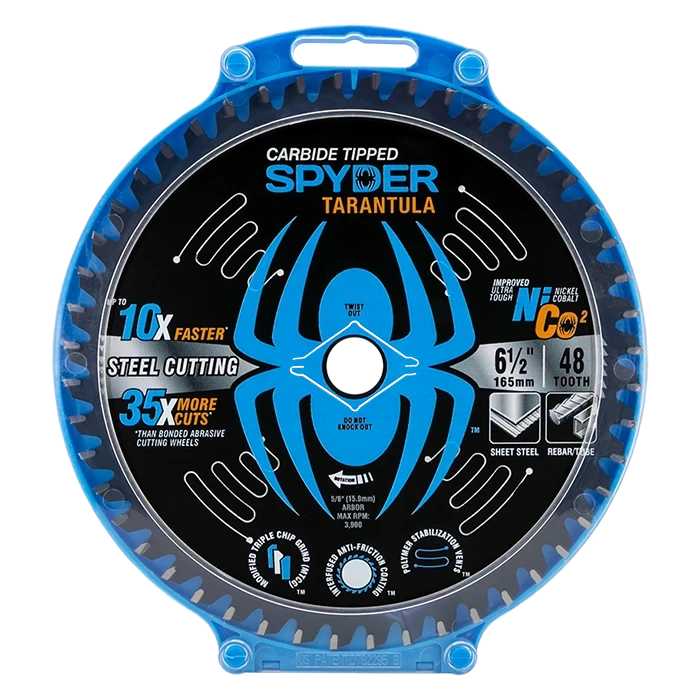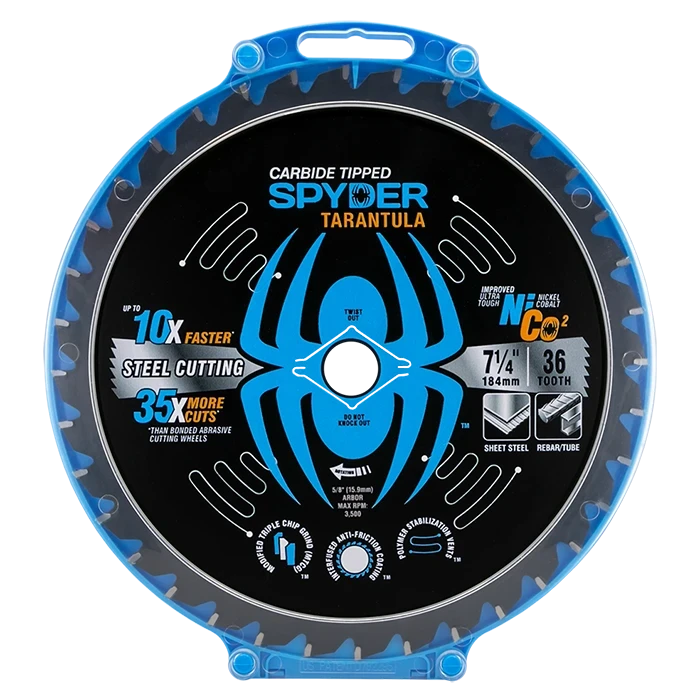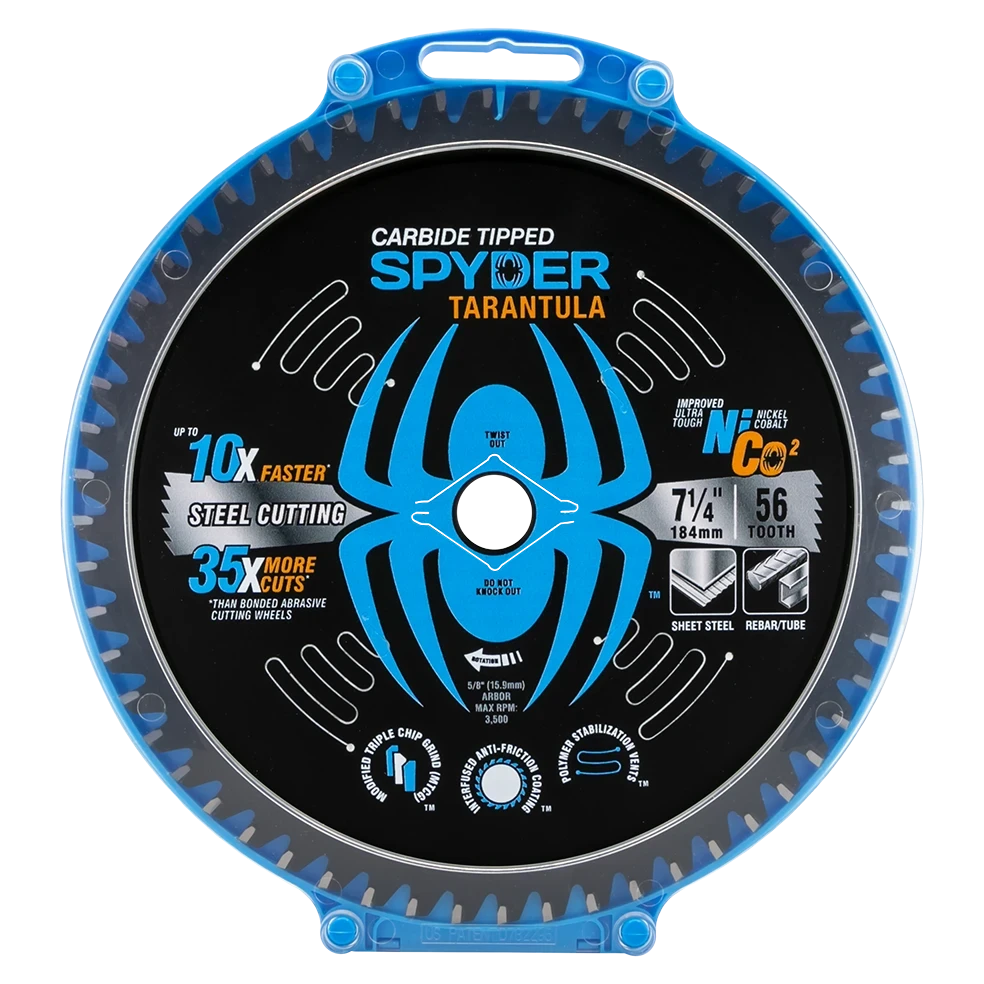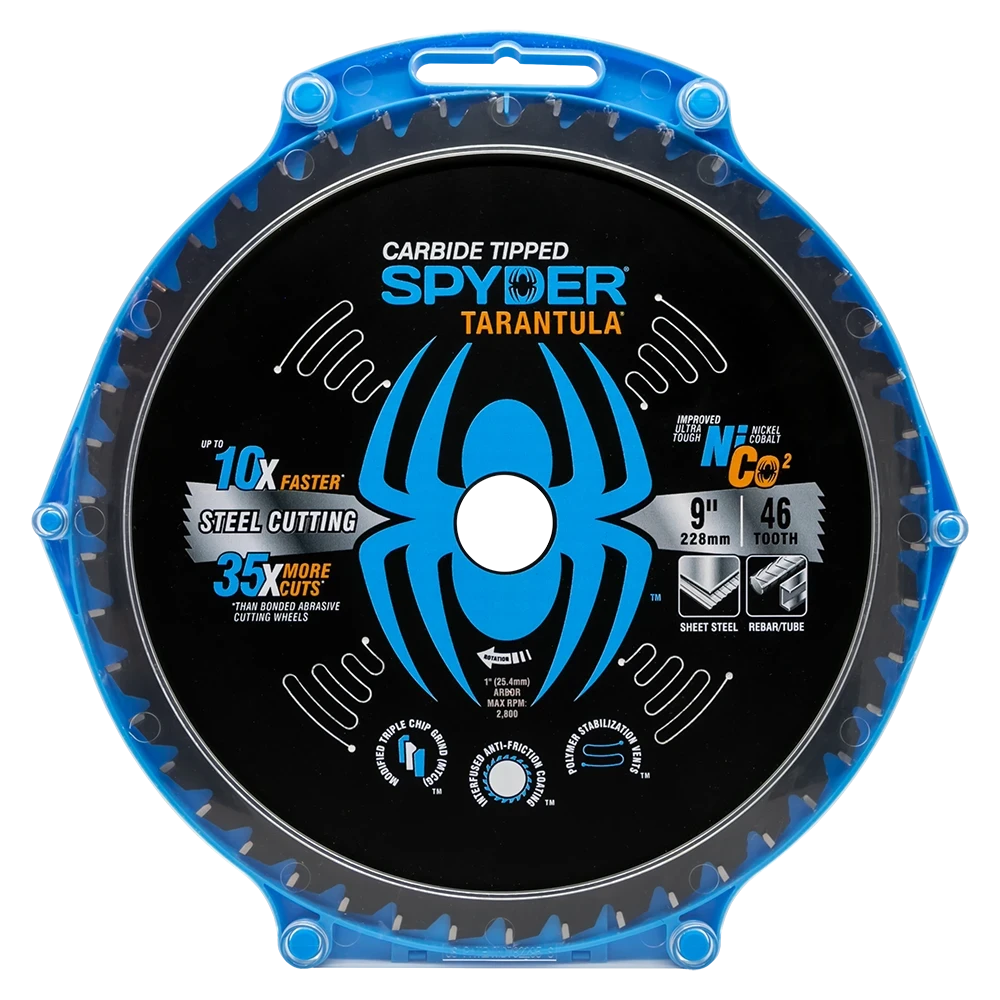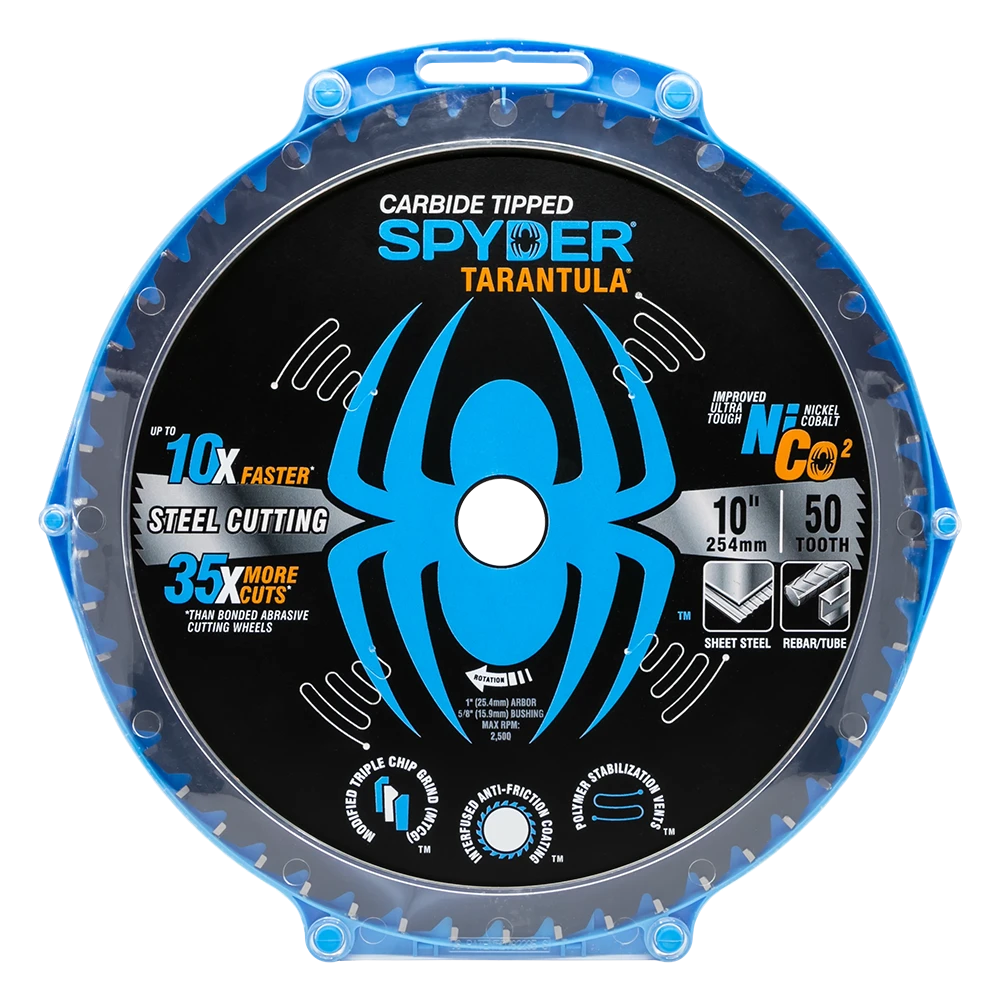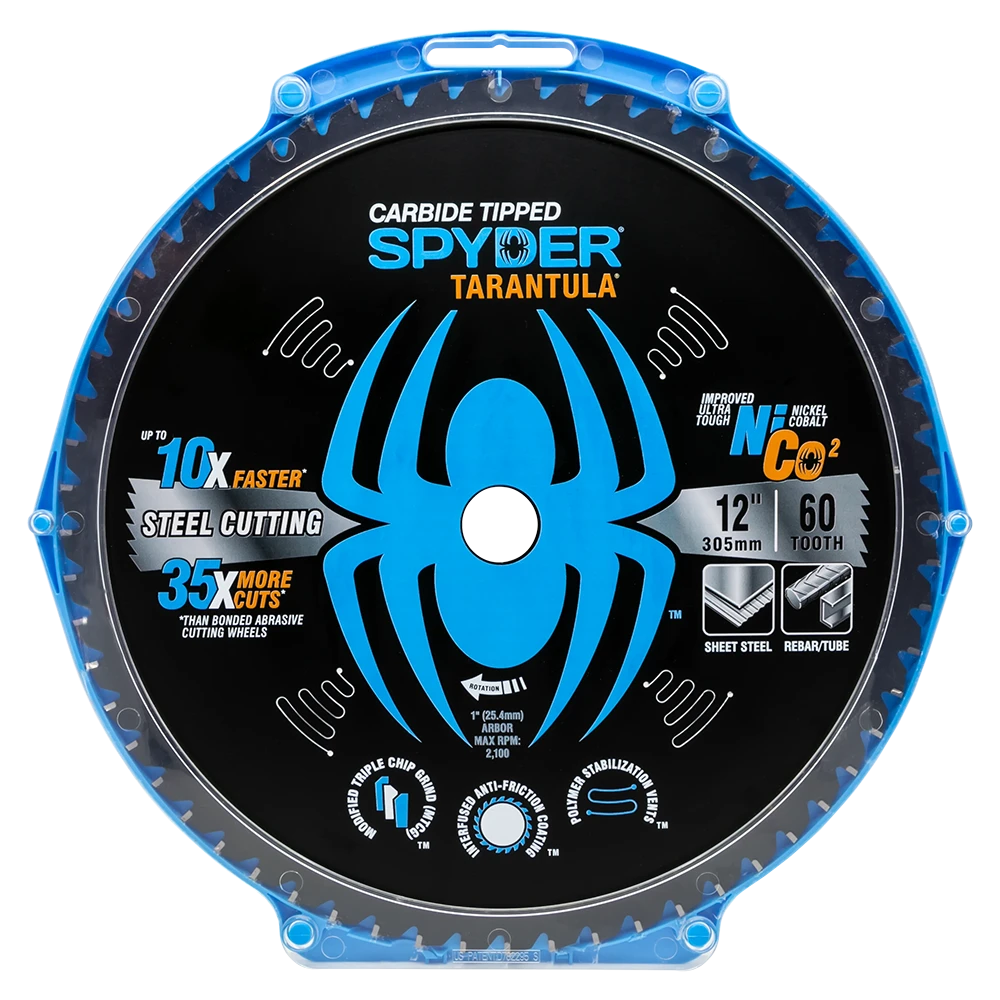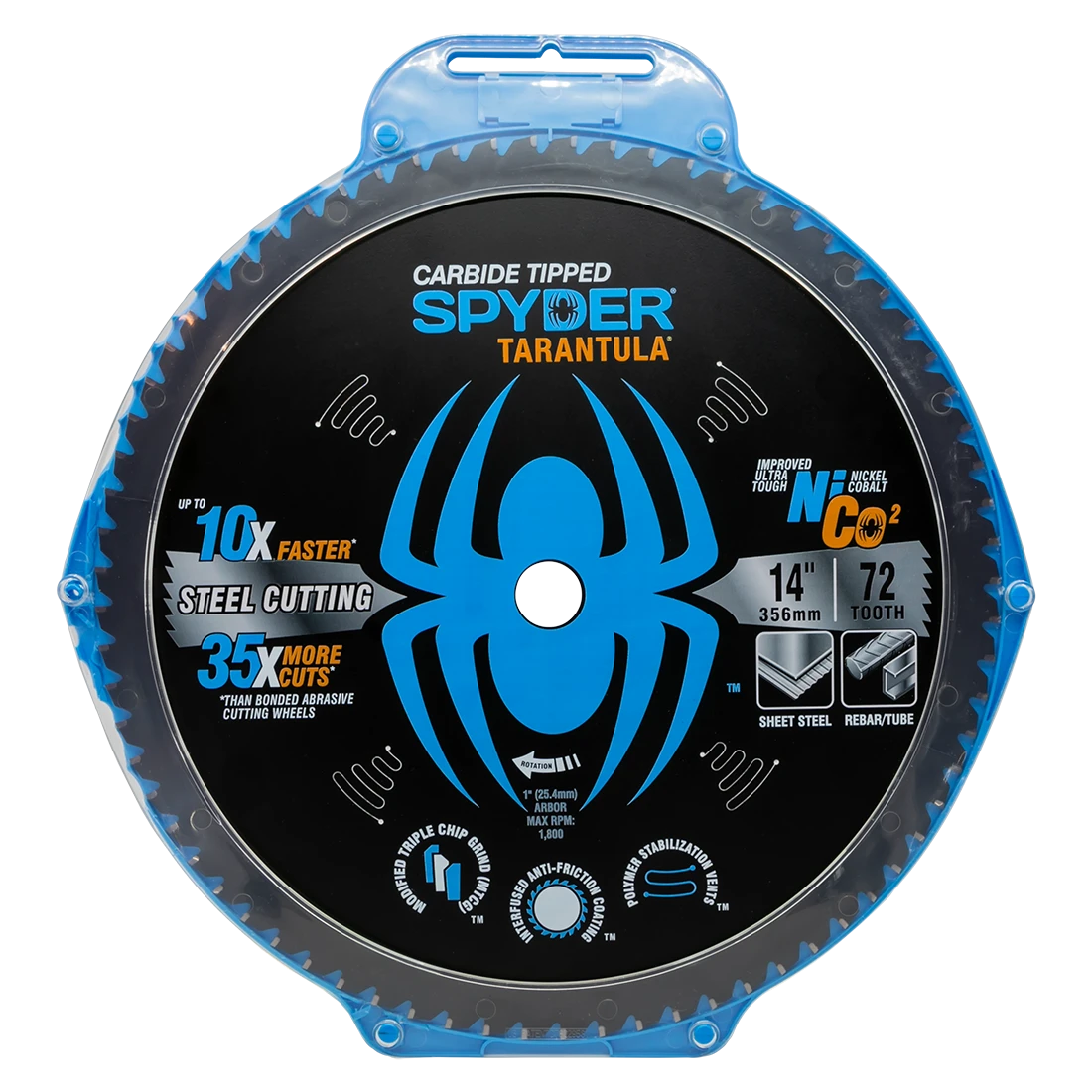Features
Spyder Tarantula™ metal-cutting circular saw blades are the ideal choice for clean cutting steel and other metal profiles. These high-performance blades last up to 35x longer than standard bonded abrasive cutting wheels and make those cuts up to 10x faster. Ultra tough NiCo2 carbide cutting teeth, made with upgraded nickel cobalt, feature a modified triple chip grind for unsurpassed cutting speed, life, and cleanliness – expelling larger chips with less cutting heat, dust, and debris. An interfused anti-friction coating prevents blade binding and polymer-filled stabilization vents reduce noise and vibration for ultra-precise burr-free cuts. Tarantula™ metal-cutting saw blades are compatible with cordless and corded circular saws and can be used to cut steel and metal profiles of various thicknesses. Ideal for steel bar, sheet, extrusions, studs, channel, angle iron, conduit, pipe, rebar, rods and more.
- Up to 35x more cuts than bonded abrasive cutting wheels
- Up to 10x faster than bonded abrasive cutting wheels
- Upgraded ultra tough NiCo2 carbide cutting teeth make the cleanest cuts in steel and other metals
- Dramatically cooler cutting and burr-free cuts with less sparks than those made with a bonded abrasive cutting wheel
- Interfused anti-friction coating prevents blade binding and protects against heat and corrosion
- Polymer-filled stabilization vents reduce noise and vibrations for a cleaner, straighter cut
- Designed for use on metal-cutting circular saws that feature high-torque, low-RPM motors – not recommended for use on standard wood-cutting circular saws
Warning
To reduce the risk of injury, read the instruction manual and follow the safety regulations of the power tool you will be using with your Spyder accessory. Use personal protective equipment. Always wear eye and hearing protection. Protective equipment such as a dust mask, non-skid safety shoes, and protective apparel should be used in appropriate conditions to reduce the risk of personal injury. WARNING: Operating the tool without wearing proper protection may result in serious injury. Exposure to noise can cause hearing loss. Do not use near flammable liquids or in explosive atmospheres, near fumes, gases, or dust. The hot chips or shavings and sparks may ignite the dust or fumes. Remove materials or debris that may become ignited from work area. To reduce the risk of explosion, electric shock, and property damage, always check the work area for hidden gas pipes, electrical wires, and water pipes when making blind and/or plunge cuts. Before each use, check that the blade is sharp, clean, and free from damage. Do not use a dull, dirty, or damaged blade as this may result in kickback, blade pinching, binding or stalling, and loss of control. These situations may cause the power tool to jump back at the operator and can result in a serious injury. Always use blades of the correct size with the correct arbor hole shape and size for your power tool. Blades that do not match the mounting hardware of the power tool will run eccentrically, causing loss of control. To assure proper rotation direction of the saw blade, the arrow direction on the blade must correspond with the arrow direction on the power tool. Mount blade properly with the correct blade washers and bolt for your power tool. Make sure the speed marked on the blade is at least as high as the no-load RPM marked on the power tool. To reduce the risk of injury, never operate the power tool without proper safety guards in place. Beware of ejecting chips as they become hot during cutting.
WARNING
ONLY USE A METAL-CUTTING BLADE ON A SAW THAT IS DESIGNED FOR METAL CUTTING!
Using a metal-cutting blade on a wood-cutting circular saw can result in damage to the saw, damage to the blade, and serious injury to the user.


